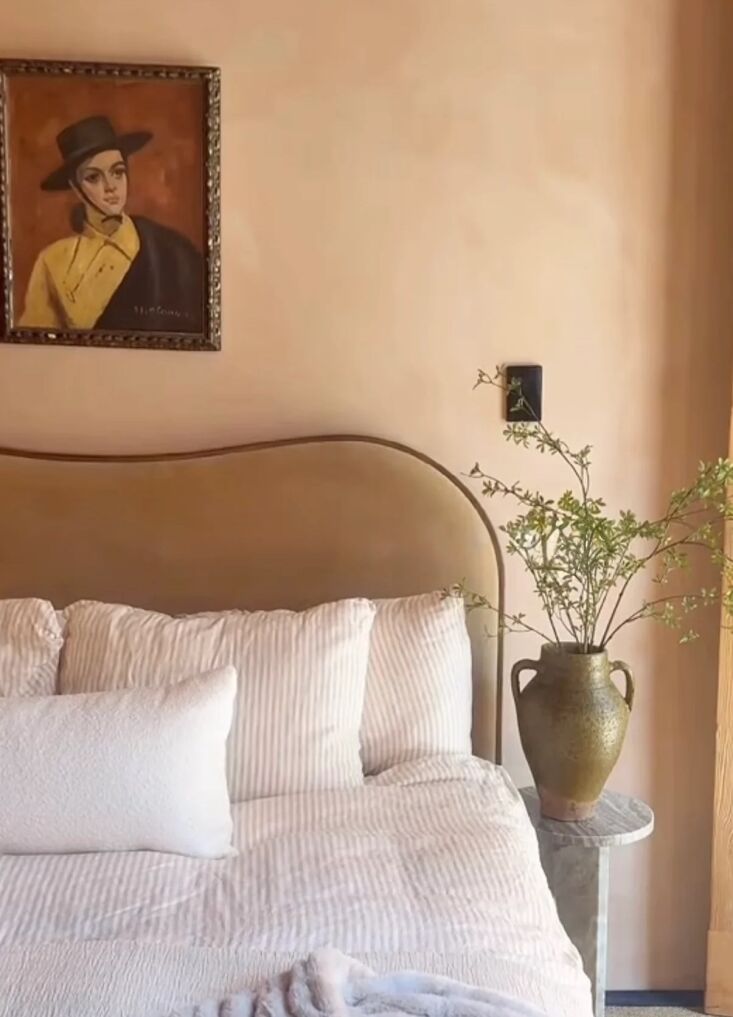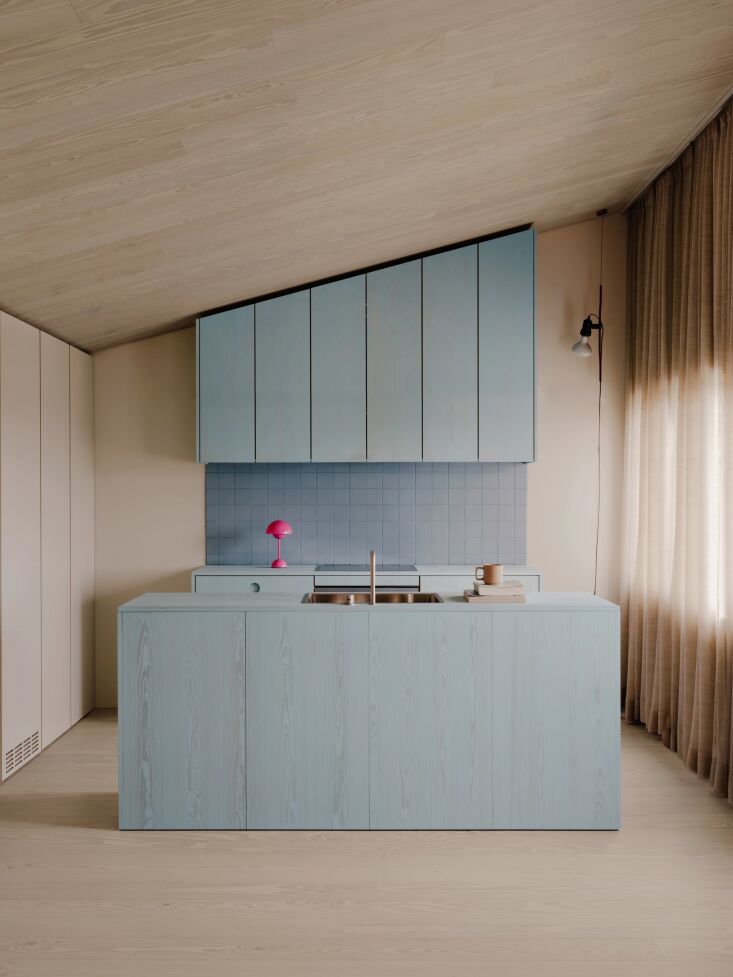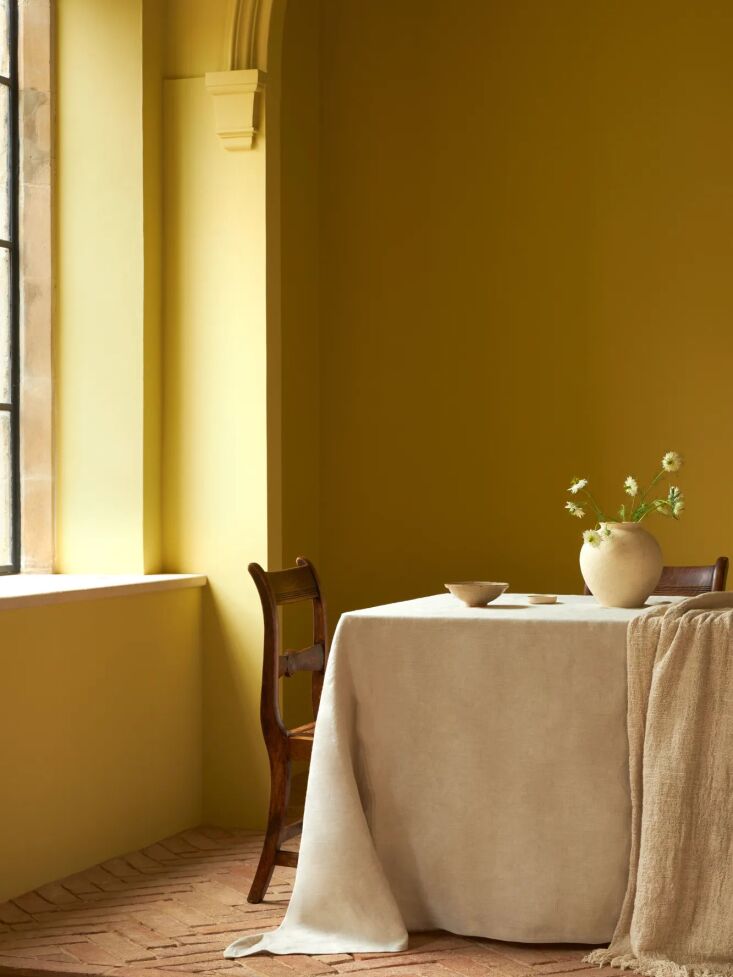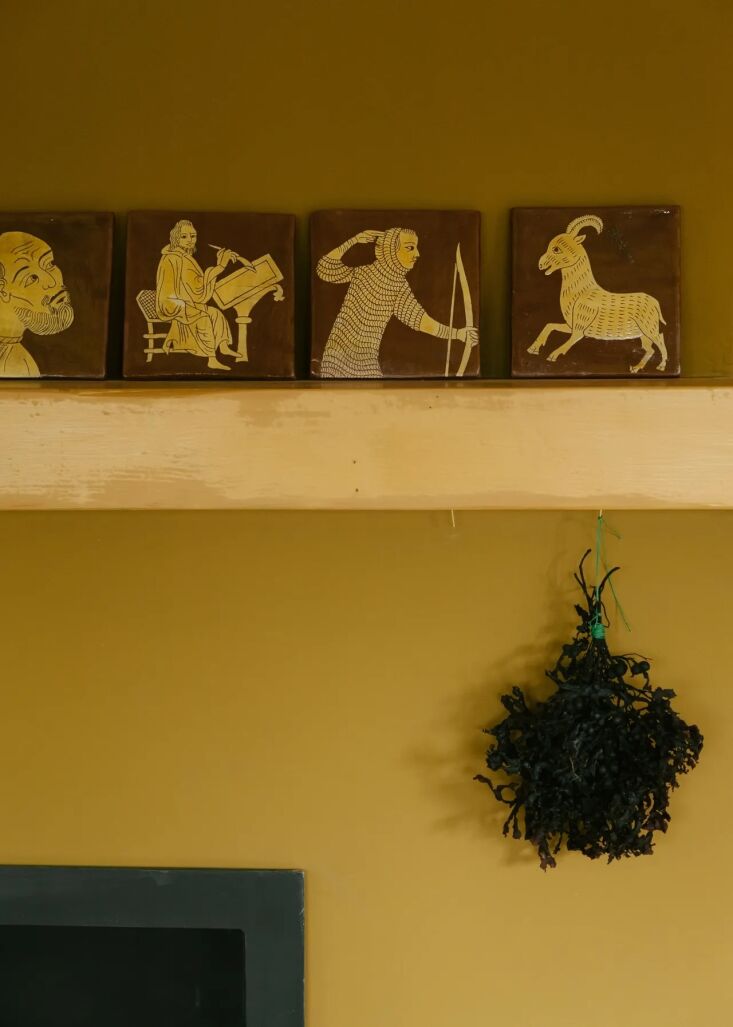A fresh coat of paint has long been the route to a quick home rehab—today’s acrylic and latex paints are so easy to apply. But it’s become clear that those paints aren’t great for the environment, or for your health. According to the Healthy Materials Lab at Parsons School of Design in New York City, acrylic paints, which are mostly made from petrochemicals derived from fossil fuels, “contribute to the massive amount of microplastics found in the environment. They’re basically a liquid plastic.” What’s more, “making these paints is carbon-intensive and contributes to the climate crisis.” (For a quick primer, and info on how to avoid greenwashed alternatives, see pg. 230 of our book Remodelista: The Low-Impact Home).
Jonsara Ruth, cofounder and executive director of the Healthy Materials Lab, recalls how we used to bring in professional painters to do the job. But as people started doing it themselves, the paint companies made it easier and easier to apply—adding more and more chemicals in the process.
Luckily, these days there are plenty of alternatives. Healthier, eco-friendly paints are being made from ingredients found in nature, such as linseed oil, soy, clay, lime, chalk, silicate, and cellulose resin. You don’t have to sacrifice color, and they don’t harm the earth when discarded. And yes, they are commercially available.
Above: In A Colorful Yet Restrained Family Home That Doubles As an Art Gallery, pale blue linseed oil adds subtle color to the birch plywood cabinets. Photograph by Ståle Eriksen.
What natural paints are available?
Ruth, of the Health Materials Lab, specifies three main paint types made from earth:
- clay paints,
- lime paints,
- and mineral paints.
And then there are the paints made from plants:
- linseed oil from the flax plant,
- tung oil from the seeds of a tung tree,
- walnut oil,
- even olive pits.
All these are commercially available from many brands.
 Above: Color Atelier’s subtly textured Limewash Paint in the soft peach called Native.
Above: Color Atelier’s subtly textured Limewash Paint in the soft peach called Native.
Are natural paints more expensive or hard to use than traditional paints?
Not necessarily, Ruth says. It depends on the brand and where you buy them. For example, both Benjamin Moore and Lowes stores now carry the Romabio line of lime paints.
Ruth will admit that using the new paints made from natural materials requires a little more knowledge, but it isn’t difficult. For example, lime paint comes as a thick paste; you add water to achieve your desired consistency. With linseed oil paint, depending on the finish and whether you’re painting wood or metal, you mix in added linseed oil. But directions are available online: for example, Michiel Brouns, who founded Brouns & Co. Linseed Paints in England, offers a slew of helpful videos on his site.
As for the cost, adds Burcu Garnier, cofounder of Color Atelier, adds that limewash is “actually more affordable than some of the standard latex paints.”
 Above: Linolie & Pigment’s breathable, pigmented Satin Wood Oil—a linseed oil product—gives soft color to this renovated kitchen originally designed by architects Eyvind Retzius and Svein Bjoland. See more pigmented kitchens like this in Seeing in Technicolor: 10 Color-Stained Kitchens That Swap Paint for Pigment.
Above: Linolie & Pigment’s breathable, pigmented Satin Wood Oil—a linseed oil product—gives soft color to this renovated kitchen originally designed by architects Eyvind Retzius and Svein Bjoland. See more pigmented kitchens like this in Seeing in Technicolor: 10 Color-Stained Kitchens That Swap Paint for Pigment.
Where can I find mineral-, earth-, and plant-based paints?
Among the new companies, Ruth mentions Alkemis, which makes mineral paints in beautiful colors for interior walls, and Earthaus Plaster, which only uses natural earthen mineral pigments in their lime finishes. Besides their palette of 55 colors, they’ll custom-blend a shade to meet your design needs.
The Danish company Linolie & Pigment (see: Old Recipes & Proud Traditions: Linolie & Pigment in Haderslev, Denmark) is becoming known for its Satin Wood Oil, a pigmented linseed oil that brings out the natural grain when used on wood. The same paint can also be used on bricks, concrete, cork, and ceramics. All their products are made to order, says brand lead Nikolaj Bonde Schmidt, and can be shipped to the US. “We keep our products as simple as possible—which means that the drying time can be longer than with conventional paint.” Some pigments will fade from sun exposure over time, but “you simply add a new layer of oil, and it will look like new,” says Schmidt.
 Above: Mylands’ Olive Stone Emulsions are made from—what else?—discarded olive pits. Read more in Mylands: Plant-Based Emulsion Paint, Made from Olive Pits.
Above: Mylands’ Olive Stone Emulsions are made from—what else?—discarded olive pits. Read more in Mylands: Plant-Based Emulsion Paint, Made from Olive Pits.
Color Atelier, a US-based company, uses traditional European methods to make mineral-based limewash paints and plasters. “Limewash is an ancient paint,” says cofounder Garnier. “We simply reformulated it to make it ours, adding other mineral ingredients like clay, marble powder, and mineral pigments.” The manufacturing takes place at their facility in California, a few miles from their San Francisco showroom; a second showroom is in Brooklyn. Color Atelier’s curated color palette currently has 66 shades, with 10 more being added in the coming weeks. “Our inspiration is always derived from nature,” says Garnier.
What are the other pros of natural paints?
Breathability is one advantage of using natural paints. In efforts to be more energy-efficient, there’s been a move towards making air barriers in buildings. A plastic paint barrier outside or inside a home (such as painted bricks or walls) doesn’t allow vapor to pass through, and the trapped moisture can start to create mold. But mineral-based and plant-based paints are breathable; they allow moisture to pass through.
 Above: Alkemis’s paint is made from minerals like clear quartz, hematite, goethite and/or chromite, “depending on shade.” Shown is their Glint colorway.
Above: Alkemis’s paint is made from minerals like clear quartz, hematite, goethite and/or chromite, “depending on shade.” Shown is their Glint colorway.
Garnier also calls limewash “as DIY-friendly as it gets.” It’s traditionally applied to porous and absorbent surfaces, such as drywall, plaster, stucco, cement, brick, and concrete. She praises the “beautiful tonal variations” in a limewash texture, saying, “When the lime begins to dry, it just starts blooming, giving you the highs and the lows of the colors.” (N.B. Our story on Everything You Need to Know About Limewash Paint is one of our most popular of all time.)
People will often limewash an entire room: walls, ceiling, baseboard, trim, crown moldings, and casings. Garnier recommends starting with their water-based mineral primer, which contains marble dust to guarantee proper bonding. The company also makes a matte sealer top coat for doors, baseboards, and high-traffic areas. For a translucent look on wood, a single coat of limewash allows the veins and graining to show through.
 Above: At Borradill, a Designer’s Scots-Scandi Rental House and Cottage on the West Coast of Scotland, designer Claire Mookerjee mixed linseed oil paints to rich effect. Photograph by Joshua Page, courtesy of Mookerjee Design (@mookerjee_design).
Above: At Borradill, a Designer’s Scots-Scandi Rental House and Cottage on the West Coast of Scotland, designer Claire Mookerjee mixed linseed oil paints to rich effect. Photograph by Joshua Page, courtesy of Mookerjee Design (@mookerjee_design).
Claire Mookerjee, who runs Mookerjee Design Studio in London, is a big supporter of linseed-oil paints. When researching the colorful Swedish timber-framed buildings of the 18th and 19th centuries, she found that preservation was a main driver. “They used pine tar on the outside, in distinctive shades of red, dark green and black, and linseed oil on the inside. Oil-based paints nourish and protect wood, giving it a really long life,” she says. “They’re absorbed into the fibrous top layer of the timbers. If the paint fades over time, you just reapply it.”
Are there any downsides?
Garnier, of Color Atelier, cites two drawbacks: “Vibrant colors aren’t possible due to the nature of lime. The colors read a little muted because we refuse to add the chemicals that would help us reach that saturation.” The other drawback? “Once you limewash a room, you’ll never want to use standard paint again. It’s addictive!”
And while Mookerjee feels that natural ingredients in paints can limit the range of colors, she adds, “This is a highly innovative industry: new colors and processes are emerging all the time. It’s moving from a very polluting industry into something much better.”
Curious to give alternative paints and pigments a try? For further reading, see:
- Seeing in Technicolor: 10 Color-Stained Kitchens That Swap Paint for Pigment
- Old Recipes & Proud Traditions: Linolie & Pigment in Haderslev, Denmark
N.B.: Featured image from Color Atelier.


